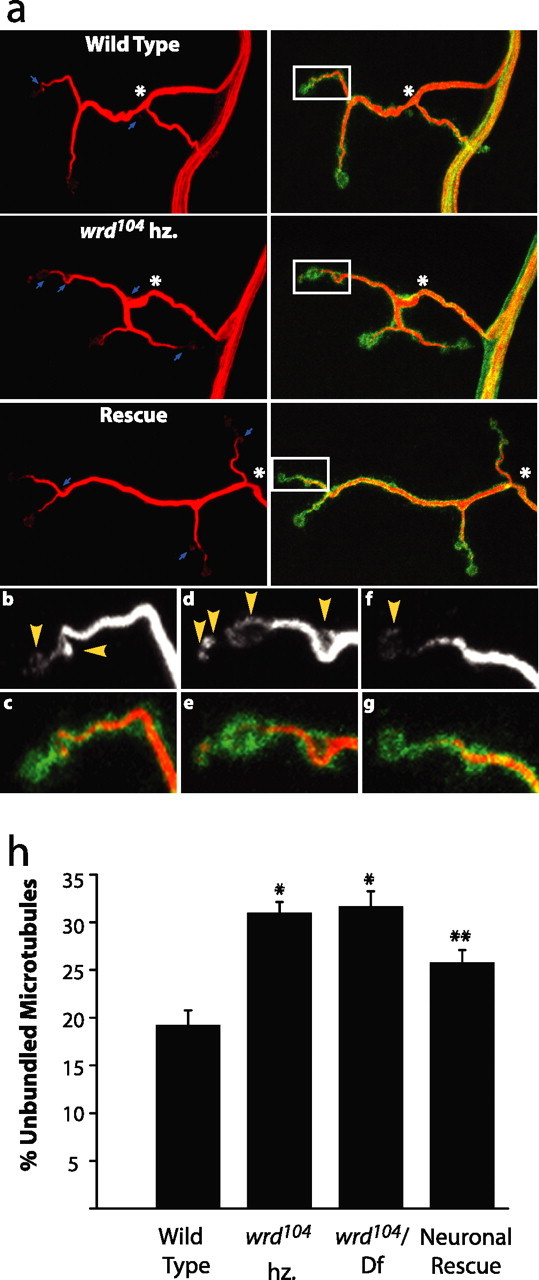Figure 6.

Loss of wrd disrupts cytoskeletal stability. a, Representative confocal images of muscle 4 synapses from wild type (elav Gal4/+), wrd104 hz (elav Gal4/+; wrd104/wrd104), and rescue (elav Gal4/UAS wrd; wrd104/wrd104). Left column displays synapses stained with antibody to Futsch, a reporter for microtubules, and right column displays corresponding synapses costained with α-Futsch and α-HRP. Futsch staining demonstrates bundled microtubules within the core of the synaptic terminal. Unbundled microtubules are visible at terminal boutons and, in some instances, along the shaft of the terminal, as marked by arrows. The wrd mutant shows an increased occurrence of unbundled microtubules along the shaft of the terminal. Asterisks mark junction between the synaptic terminal and preterminal axon. Insets mark a representative sample of unbundled microtubules at terminal boutons and are enlarged in b–g. b–g, Enlarged insets displaying representative terminal boutons from wild type (b, c), wrd104 hz (d, e), and rescue (f, g). Top row shows staining for Futsch alone, and bottom row shows costaining of Futsch and HRP. Arrowheads in top row indicate instances of unbundled microtubules. Although insets display a similar number of boutons for each genotype, instances of unbundled microtubules are greatest in the wrd104 mutant and take up a greater proportion of the total microtubule area than in the other genotypes. c, Quantification of unbundled microtubules as a percentage of total area of synaptic microtubules. For wild type (elav Gal4/+), wrd104 hz (elav Gal4/+; wrd104/wrd104), wrd104/Df(3R)DG4 [elav Gal4/+; wrd104/Df(3R)DG4], and neuronal rescue (elav Gal4/UAS wrd; wrd104/wrd104), n = 27, 27, 23, and 28, respectively. Both wrd mutants have increased unbundled microtubules relative to WT; *p < 0.01. Neuronal rescue significantly decreases unbundled microtubules relative to both wrd mutants; **p < 0.05. Error bars indicate SEM.
